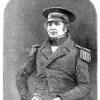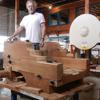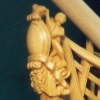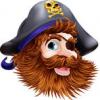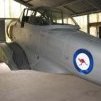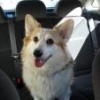MORE HANDBOOKS ARE ON THEIR WAY! We will let you know when they get here.
×
-
Posts
410 -
Joined
-
Last visited
Reputation Activity
-
 Erebus and Terror reacted to GuntherMT in L'Amarante 1749 by giampieroricci - FINISHED - 1:30 - French Corvette
Erebus and Terror reacted to GuntherMT in L'Amarante 1749 by giampieroricci - FINISHED - 1:30 - French Corvette
It's lighting the interior of the model to better show the detail. How is that a gimmick? And what it adds to the model is interior lighting, delivered from inside the model instead of a light of some sort shining into it. It's to illuminate the model, not 'do something for it'.
-
 Erebus and Terror reacted to giampieroricci in L'Amarante 1749 by giampieroricci - FINISHED - 1:30 - French Corvette
Erebus and Terror reacted to giampieroricci in L'Amarante 1749 by giampieroricci - FINISHED - 1:30 - French Corvette
The effect with three beams:
-
 Erebus and Terror reacted to giampieroricci in L'Amarante 1749 by giampieroricci - FINISHED - 1:30 - French Corvette
Erebus and Terror reacted to giampieroricci in L'Amarante 1749 by giampieroricci - FINISHED - 1:30 - French Corvette
I started to prepare the beams with the slots for the strings, the stringers and carts
Many Arsenal purists turn up their noses, but willing to give a little 'light to the interior, I prepared the first beam that brings some LEDs in the lower face
and this is the effect obtained:
-
 Erebus and Terror reacted to giampieroricci in L'Amarante 1749 by giampieroricci - FINISHED - 1:30 - French Corvette
Erebus and Terror reacted to giampieroricci in L'Amarante 1749 by giampieroricci - FINISHED - 1:30 - French Corvette
I made a big mistake with the bulkhead with two doors that do not touch the floor. Of course I redid the bulkhead correcting the error
-
 Erebus and Terror reacted to giampieroricci in L'Amarante 1749 by giampieroricci - FINISHED - 1:30 - French Corvette
Erebus and Terror reacted to giampieroricci in L'Amarante 1749 by giampieroricci - FINISHED - 1:30 - French Corvette
A little progress:
-
 Erebus and Terror reacted to EdT in Young America 1853 by EdT - FINISHED - extreme clipper
Erebus and Terror reacted to EdT in Young America 1853 by EdT - FINISHED - extreme clipper
Thank you everyone for your very generous comments and for all the likes. They keep raising the bar for me.
No, E&T, making chain is above my pay grade. The purchased, studded, copper chain used is particularly nice, 10 lpi from Caldercraft in Cornwall.
Allan, I'm overwhelmed. Thank you. No, there is no home for the model, except to say that one must either be found or one of us will need to move out. She is going to be big. Fortunately, that problem is a couple years off - at least.
Thank you, Greg. Likes are very welcome but comments are always better - and especially questions.
The last tasks to complete the work needed for Volume II is finished except for a dozen or so of those pesky belaying pins. Stream Anchor and swinging boom iron work were completed this week and will be posted soon.
Thanks, again,
Ed
-
 Erebus and Terror got a reaction from ggrieco in Young America 1853 by EdT - FINISHED - extreme clipper
Erebus and Terror got a reaction from ggrieco in Young America 1853 by EdT - FINISHED - extreme clipper
This is amazing work Ed, really stunning! Did you make the chain, too?
-
 Erebus and Terror got a reaction from EdT in Young America 1853 by EdT - FINISHED - extreme clipper
Erebus and Terror got a reaction from EdT in Young America 1853 by EdT - FINISHED - extreme clipper
This is amazing work Ed, really stunning! Did you make the chain, too?
-
 Erebus and Terror got a reaction from CaptainSteve in Young America 1853 by EdT - FINISHED - extreme clipper
Erebus and Terror got a reaction from CaptainSteve in Young America 1853 by EdT - FINISHED - extreme clipper
This is amazing work Ed, really stunning! Did you make the chain, too?
-
 Erebus and Terror reacted to EdT in Young America 1853 by EdT - FINISHED - extreme clipper
Erebus and Terror reacted to EdT in Young America 1853 by EdT - FINISHED - extreme clipper
Young America - extreme clipper 1853
Part 177 – Mounting Bower Anchors
The plan has been to suspend the wood stocked bower anchor from the starboard cathead as depicted in the picture of the ship docked at San Francisco. The iron stock anchor is to be placed in its storage position on the port side of the forecastle. The first picture shows mounting chocks and two securing eyebolts for anchor storage.
The next picture shows the iron-stocked bower anchor in position, secured by a rope lashing to eyebolts on the margin plank.
The positioning and means of securing the anchors is somewhat speculative, but typical. In the next picture, eyebolts have been installed below the arms and a lashing is being touched with thinned white glue to secure the seizing.
In the next picture, the starboard anchor has been suspended from the trip chain on the cathead.
The cable chain is also threaded on to the shackle. This shackle has a threaded bolt which will be trimmed to size later. A hooked brass rod can be seen inserted from above the windlass through the hawse hole to fish the chain under the forecastle.
The next picture shows the chain pulled through over the top of the windlass.
The string shown in the picture has been threaded over the windlass so the chain can be taken over for another turn. In the next picture the chain has been wound over the windlass and dropped through the chain tube to the hold.
The last picture shows the suspended anchor ready for release. The shackle bolt remains untrimmed at this stage.
The next step will be to make and install the smaller stream anchor.
Ed
-
 Erebus and Terror got a reaction from popeye the sailor in HMS Terror by Erebus and Terror - FINISHED - Scale 1:48 - POB - as fitted for polar service in 1845
Erebus and Terror got a reaction from popeye the sailor in HMS Terror by Erebus and Terror - FINISHED - Scale 1:48 - POB - as fitted for polar service in 1845
PLANKING TERROR'S TOPSIDE
Over the summer months, I have been working steadily on my model's topside planking, while it seems the real Terror has been biding her time, waiting to reveal herself to the world. Despite the excitement of the discovery, my work continues, though perhaps with somewhat more adrenaline than previously.
I began this part of the project by cutting out the numerous ports on Terror's bulwarks, and then proceeded with planking the entire topside down to the level of the chock channels. The planking followed a carefully laid out plan that I devised for the entire model. Based on data in 1845 stern plans by Oliver Lang, the strakes on my model Terror vary between nine and ten scale inches wide whenever possible. Consistent with information gleaned from the original ship's contract, each strake is approximately 24 scale feet long (where possible), and follows a three plank shift. Deviations from this plan were necessary in many portions along the topside, where ports interrupted the normal planking layout (and common sense indicated a butt would not be necessary). I marked the position of the port sills using paper guides (this is the reverse
of the printed plan, used on the port side) Each port was carefully cut out with a sharp blade. The port sills were lined with holy. Terror's bulwarks were riddled with ports. Here the bitts have been modeled
from Swiss pear and are portrayed in an unworn condition. Details of additional bitts. In the stern, Terror had two large chocks on each side. These were cut from Swiss
pear sheet stock and the correct shape transferred to them from a card cutout. Ensuring the chocks are symmetrical. The finished pieces. And again after installation. Planking began at the solid ice channels and proceeded strake by strake (tier by tier), following the
plan I had devised. Terror has an extremely bluff bow, and care had to be taken here. While spiling
would be preferred, I am constantly worried about my wood supply and used a technique taught
by Chuck Passaro. It worked very well, despite planking in scale thickness (here 4"). The port side, after a coat of Minwax Wipe on Poly. Not the bottom
strake is left untreated so that I can glue the ice channel top to it. Comparing the symmetry of planking on both sides of the knee. Following
the planking plan and marking off the hull carefully ensures
less variation. Terror's bow is so bluff, and the scale plank so thick, that I resorted to using a plank bending tool
to achieve the proper curvature. I dread planking the second layer on the wales, which
are over 9 scale inches thick! I expect hot water immersion , or hot iron bending,
will be my only option there. Planking surrounding the many ports at Terror's bow. The planking plan indicated that one plank, in particular, would be very complex.
I measured and marked it off carefully before cutting. Installation involved dry fitting, careful sanding, dry fitting again, sanding again, and
repeating constantly until it was acceptable. Planking amidships, showing the three plank shift. Detail of the chocks after planking. The completed planking run on Terror's starboard side. The next task in my project will be to frame the stern lights (windows) and install them. Until then, I hope we get to see more images of the real ones from Franklin Expedition 2016. -
 Erebus and Terror reacted to Omega1234 in SHADOW by Omega1234 - FINISHED - Scale 1/300 - Luxury 60m Mega Yacht
Erebus and Terror reacted to Omega1234 in SHADOW by Omega1234 - FINISHED - Scale 1/300 - Luxury 60m Mega Yacht
Hi folks
Thanks to everyone for their Likes and comments! Greatly appreciated.
As you can see for the following photos, I've now been able to make some progress on Shadow's hull. This consisted of adding the longitudinal stringers and vertical frames onto the balsa plug, thus creating the framework of the hull. Once planked, I'll release the hull from the balsa plug, with the result being a nice strong hull...well, hopefully anyway.
Wish me luck!
All the best and enjoy your weekends.
Cheers
Patrick
-
 Erebus and Terror reacted to Mike Y in Beavers Prize 1777 by Mike Y - 1:48 - POF - Hahn style
Erebus and Terror reacted to Mike Y in Beavers Prize 1777 by Mike Y - 1:48 - POF - Hahn style
Working on the keelson.
Decided not to rely on the plans due to possible error here and there, and fit it to the hull instead.
Fixing the keelson parts to the hull with masking tape:
Marking frame boundaries:
Keelson markup completed:
First fit after milling, some notches are not wide enough. Three iterations on a mill were required, because these pencil marks are not precise enough (hard to get the pencil right, the angle was awkward):
After the fitting. Will need to make some notches deeper to avoid gaps:
Now rinse and repeat!
-
 Erebus and Terror got a reaction from PeteB in HM Cutter Cheerful 1806 by Chuck - FINISHED - 1:48 scale - kit prototype
Erebus and Terror got a reaction from PeteB in HM Cutter Cheerful 1806 by Chuck - FINISHED - 1:48 scale - kit prototype
Wonderful, Chuck, especially the simulated metalwork.
-
 Erebus and Terror got a reaction from Jack12477 in HM Cutter Cheerful 1806 by Chuck - FINISHED - 1:48 scale - kit prototype
Erebus and Terror got a reaction from Jack12477 in HM Cutter Cheerful 1806 by Chuck - FINISHED - 1:48 scale - kit prototype
Wonderful, Chuck, especially the simulated metalwork.
-
 Erebus and Terror got a reaction from Canute in HM Cutter Cheerful 1806 by Chuck - FINISHED - 1:48 scale - kit prototype
Erebus and Terror got a reaction from Canute in HM Cutter Cheerful 1806 by Chuck - FINISHED - 1:48 scale - kit prototype
Wonderful, Chuck, especially the simulated metalwork.
-
 Erebus and Terror got a reaction from Dee_Dee in HMS Terror by Erebus and Terror - FINISHED - Scale 1:48 - POB - as fitted for polar service in 1845
Erebus and Terror got a reaction from Dee_Dee in HMS Terror by Erebus and Terror - FINISHED - Scale 1:48 - POB - as fitted for polar service in 1845
PLANKING TERROR'S TOPSIDE
Over the summer months, I have been working steadily on my model's topside planking, while it seems the real Terror has been biding her time, waiting to reveal herself to the world. Despite the excitement of the discovery, my work continues, though perhaps with somewhat more adrenaline than previously.
I began this part of the project by cutting out the numerous ports on Terror's bulwarks, and then proceeded with planking the entire topside down to the level of the chock channels. The planking followed a carefully laid out plan that I devised for the entire model. Based on data in 1845 stern plans by Oliver Lang, the strakes on my model Terror vary between nine and ten scale inches wide whenever possible. Consistent with information gleaned from the original ship's contract, each strake is approximately 24 scale feet long (where possible), and follows a three plank shift. Deviations from this plan were necessary in many portions along the topside, where ports interrupted the normal planking layout (and common sense indicated a butt would not be necessary). I marked the position of the port sills using paper guides (this is the reverse
of the printed plan, used on the port side) Each port was carefully cut out with a sharp blade. The port sills were lined with holy. Terror's bulwarks were riddled with ports. Here the bitts have been modeled
from Swiss pear and are portrayed in an unworn condition. Details of additional bitts. In the stern, Terror had two large chocks on each side. These were cut from Swiss
pear sheet stock and the correct shape transferred to them from a card cutout. Ensuring the chocks are symmetrical. The finished pieces. And again after installation. Planking began at the solid ice channels and proceeded strake by strake (tier by tier), following the
plan I had devised. Terror has an extremely bluff bow, and care had to be taken here. While spiling
would be preferred, I am constantly worried about my wood supply and used a technique taught
by Chuck Passaro. It worked very well, despite planking in scale thickness (here 4"). The port side, after a coat of Minwax Wipe on Poly. Not the bottom
strake is left untreated so that I can glue the ice channel top to it. Comparing the symmetry of planking on both sides of the knee. Following
the planking plan and marking off the hull carefully ensures
less variation. Terror's bow is so bluff, and the scale plank so thick, that I resorted to using a plank bending tool
to achieve the proper curvature. I dread planking the second layer on the wales, which
are over 9 scale inches thick! I expect hot water immersion , or hot iron bending,
will be my only option there. Planking surrounding the many ports at Terror's bow. The planking plan indicated that one plank, in particular, would be very complex.
I measured and marked it off carefully before cutting. Installation involved dry fitting, careful sanding, dry fitting again, sanding again, and
repeating constantly until it was acceptable. Planking amidships, showing the three plank shift. Detail of the chocks after planking. The completed planking run on Terror's starboard side. The next task in my project will be to frame the stern lights (windows) and install them. Until then, I hope we get to see more images of the real ones from Franklin Expedition 2016. -
 Erebus and Terror got a reaction from mtaylor in HM Cutter Cheerful 1806 by Chuck - FINISHED - 1:48 scale - kit prototype
Erebus and Terror got a reaction from mtaylor in HM Cutter Cheerful 1806 by Chuck - FINISHED - 1:48 scale - kit prototype
Wonderful, Chuck, especially the simulated metalwork.
-
 Erebus and Terror reacted to Chuck in HM Cutter Cheerful 1806 by Chuck - FINISHED - 1:48 scale - kit prototype
Erebus and Terror reacted to Chuck in HM Cutter Cheerful 1806 by Chuck - FINISHED - 1:48 scale - kit prototype
To make the bowsprit....start with a square stick of boxwood 5/16" x 5/16". The inboard section will remain square. The outboard side is rounded off and tapered. There are three square holes on the inboard sides. But these start out as round holes made on the drill press while the entire stick is still square.
There is also a sheave on the outboard end. The holes for this simulated sheave are also drilled while the stick is square.
Then the outboard end is measured and marked for the 7-10-7 ratios to make it an octagon. From an octagon it is then made round. There are many way to do this. Mini-plan...files...by hand....then rounded off on a lathe or even chocked in your hand drill.
Then I made it round...in my hand drill...and taperred it to match the plan while doing so.
Once that was done...the simulated sheave on the outboard end was detailed. I used a #11 blade to connect the holes and carve it out a little. Then mini-files were used to round off the simulated sheave. Later I will darken it with pencil.
The three inboard holes need to be made square...again there are many way to do this. I decided to just use my #11 blade to carefully square off the corners. The inboard portion will eventually be painted black.
The outboard end also has a metal band with four eyes around it. This was made from paper. You could use art tape or even brass if you wanted. Again there are so many choices. It was painted black and weathered so it looked differently than the wood elements painted black.
Then it was mounted in the hole at the bow and the fit tweaked. Once it looked good, the bowsprit step was slid onto the inboard end. You wouldnt be able to slide the bowsprit in position if the step was already glued in place. So this is a bit tricky. But soon after I was able to get it all in position and glued securely. Then I touched up the paint and cleaned it up.
Next up the long guns can be positioned....but I am unsure of I will add them. They will look very crammed in there. I will have to contemplate that for a bit.
-
 Erebus and Terror got a reaction from ggrieco in Young America 1853 by EdT - FINISHED - extreme clipper
Erebus and Terror got a reaction from ggrieco in Young America 1853 by EdT - FINISHED - extreme clipper
Very nice work indeed!
-
 Erebus and Terror got a reaction from mtaylor in Young America 1853 by EdT - FINISHED - extreme clipper
Erebus and Terror got a reaction from mtaylor in Young America 1853 by EdT - FINISHED - extreme clipper
Very nice work indeed!
-
 Erebus and Terror reacted to druxey in HMS Terror found!
Erebus and Terror reacted to druxey in HMS Terror found!
The news was announced today that HMS Terror has been found in a remote bay near Nunavit. Apparently the wreck is in 'pristine' condition.
-
 Erebus and Terror reacted to Mark P in HMS Terror found!
Erebus and Terror reacted to Mark P in HMS Terror found!
Thanks Druxey;
Having seen your post, I had a look, and there are some interesting news articles about it on line.
All the best,
Mark P
-
 Erebus and Terror reacted to EdT in Young America 1853 by EdT - FINISHED - extreme clipper
Erebus and Terror reacted to EdT in Young America 1853 by EdT - FINISHED - extreme clipper
Thanks, Guys. Now, if I can just keep from snagging my shirt cuff on them.
No special holders Frank - just the vise shown in the pictures. I may have used a small hand vise shown in an earlier post to finish the cleats. The pieces were not too difficult to make. I suppose they could have been milled to make very precise shapes, but I am trying to use hand methods where feasible in the interests of non-machinist future readers of the book and also because the originals were probably manually forged and would have that look.
Ed
-
 Erebus and Terror reacted to EdT in Young America 1853 by EdT - FINISHED - extreme clipper
Erebus and Terror reacted to EdT in Young America 1853 by EdT - FINISHED - extreme clipper
Young America - extreme clipper 1853
Part 176 – Whisker Booms
After a couple weeks on my favorite beach – one passed by Young America on her last fateful voyage – I have now returned refreshed and ready for the fall modeling campaign. The whisker booms were completed just before we left.
Whisker booms were iron extensions to the catheads that served as spreaders for the chain jibboom and flying jibboom guys. The first picture shows the installation of these fragile-looking members.
The whiskers extend about 5 feet from the ends of the catheads and are bolted to the after sides. Each has formed cleats on the top face through which will pass the chain guys.
The whisker booms were made from hard brass plate and were shaped by hand methods – sawing and filing. In the next picture a jeweler's saw with a fairly wide blade is being used to cut the inner line of the end cleat on the pair of booms.
Apart from these initial cuts, each boom was shaped individually. The next picture shows one finished boom and one in progress.
To be sure these would smoothly pass the chain guys they were tested as shown below with some of the correct-size chain.
In the next picture the port boom is held in place with a clamp while the run of the chain guy is being checked.
The guys will obviously be installed later when the bowsprit is installed and rigged. The next picture shows the port boom temporarily bolted to the cathead.
The bolts were silver-soldered into the booms before blackening, then rounded off and cut to length. The bolts were then CA glued into drilled holes in the cathead.
The last picture shows the finished boom on the port side.
Ed


